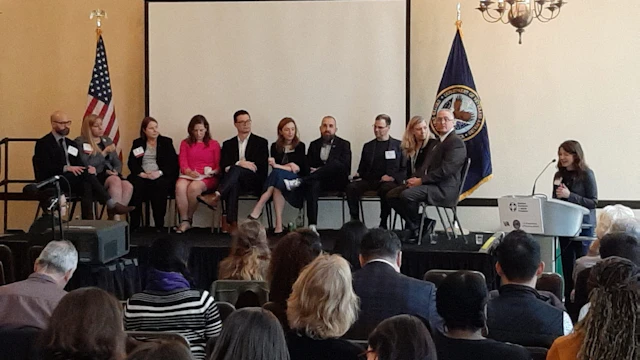Mar. 13, 2020 - United States Veterans are 1.5 times more likely to die by suicide than Americans who never served in the military. To address this increased risk, the American Foundation for Suicide Prevention has partnered with the Veterans Administration to educate communities about this risk, as well as what can be done to prevent Veteran suicide. This partnership is just one example of the work being done to further AFSP’s bold Project 2025 goal to reduce the U.S. suicide rate 20% by the year 2025.
One recent outcome of this partnership was the conference jointly hosted by the San Francisco VA Healthcare System and AFSP’s Greater San Francisco Bay Area chapter. The conference, titled Counseling Veterans at Risk of Suicide: Latest Advances in Preventive Strategies and Safe Storage of Firearms, focused on highlighting the research being done around this important topic, and the partnership work that has advanced lethal means safety as a key component of suicide prevention.
Among the conference speakers who shared their research were Dr. Joe Simonetti, Dr. Matthew J. Miller and Dr. Emmy Betz. There were also speakers sharing the Veteran and family perspectives on suicide and highlighting the impact of this leading cause of death on those with lived experience, and suicide loss survivors. A highlight of the day was a session on how successful partnerships have advanced community efforts to improve lethal means safety. Dr. Matthew A. Miller, Acting Director of Suicide Prevention for the Veterans Administration, led a session that featured Aimee Johnson, VA and Joe Bartozzi, President of the National Shooting Sports Foundation (NSSF), in which they shared their work on a toolkit designed to help communities better address safe firearm storage. The toolkit, a joint effort between AFSP, NSSF and the VA, was launched earlier this month.
The day concluded with a panel of the day’s speakers, who took audience questions about safe firearm storage in communities, suicide prevention messaging to the firearm owning community, and ways for families to address lethal means. Several conference attendees noted that an important aspect of the conference was in bringing members of the firearm owning community, Veterans and public health scientists into a rich dialogue around a common goal: to prevent firearm suicides in Veterans.
